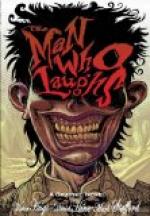although a foreigner. Winchester, termed first
and sole marquis of England, as Astorga was termed
sole Marquis of Spain, was absent, being a Jacobite;
so that there were only five marquises, of whom the
premier was Lindsay, and the junior Lothian; seventy-nine
earls, of whom Derby was premier and Islay junior;
nine viscounts, of whom Hereford was premier and Lonsdale
junior; and sixty-two barons, of whom Abergavenny
was premier and Hervey junior. Lord Hervey, the
junior baron, was what was called the “Puisne
of the House.” Derby, of whom Oxford, Shrewsbury,
and Kent took precedence, and who was therefore but
the fourth under James II., became (under Anne) premier
earl. Two chancellors’ names had disappeared
from the list of barons—Verulam, under
which designation history finds us Bacon; and Wem,
under which it finds us Jeffreys. Bacon and Jeffreys!
both names overshadowed, though by different crimes.
In 1705, the twenty-six bishops were reduced to twenty-five,
the see of Chester being vacant. Amongst the bishops
some were peers of high rank, such as William Talbot,
Bishop of Oxford, who was head of the Protestant branch
of that family. Others were eminent Doctors,
like John Sharp, Archbishop of York, formerly Dean
of Norwich; the poet, Thomas Spratt, Bishop of Rochester,
an apoplectic old man; and that Bishop of Lincoln,
who was to die Archbishop of Canterbury, Wake, the
adversary of Bossuet. On important occasions,
and when a message from the Crown to the House was
expected, the whole of this august assembly—in
robes, in wigs, in mitres, or plumes—formed
out, and displayed their rows of heads, in tiers,
along the walls of the House, where the storm was
vaguely to be seen exterminating the Armada—almost
as much as to say, “The storm is at the orders
of England.”
CHAPTER IV.
THE OLD CHAMBER.
The whole ceremony of the investiture of Gwynplaine,
from his entry under the King’s Gate to his
taking the test under the nave window, was enacted
in a sort of twilight.
Lord William Cowper had not permitted that he, as
Lord Chancellor of England, should receive too many
details of circumstances connected with the disfigurement
of the young Lord Fermain Clancharlie, considering
it below his dignity to know that a peer was not handsome;
and feeling that his dignity would suffer if an inferior
should venture to intrude on him information of such
a nature. We know that a common fellow will take
pleasure in saying, “That prince is humpbacked;”
therefore, it is abusive to say that a lord is deformed.
To the few words dropped on the subject by the queen
the Lord Chancellor had contented himself with replying,
“The face of a peer is in his peerage!”
Ultimately, however, the affidavits he had read and
certified enlightened him. Hence the precautions
which he took. The face of the new lord, on his
entrance into the House, might cause some sensation.
This it was necessary to prevent; and the Lord Chancellor
took his measures for the purpose. It is a fixed
idea, and a rule of conduct in grave personages, to
allow as little disturbance as possible. Dislike
of incident is a part of their gravity. He felt
the necessity of so ordering matters that the admission
of Gwynplaine should take place without any hitch,
and like that of any other successor to the peerage.




